Want to know what innovation holds next for humanity and the world?
Here’s your ultimate cheat sheet.
Just 14 years after Neil Armstrong (AAE’55, HDR E’70) earned a bachelor of science degree at Purdue University, he walked on the moon. He inspired a nation by proclaiming that his one small step in space was “one giant leap for mankind.”
Purdue gives a nod to the words Armstrong uttered on his groundbreaking moonwalk with its Giant Leaps Ideas Festival in celebration of the University’s sesquicentennial in 2019.
The yearlong festival connects world-renowned innovators and Purdue experts in conversations on the most critical problems and opportunities facing our world in four areas: the evolution of space exploration, advances in artificial intelligence and automation, issues of human health and longevity, and sustainability.
“The festival’s themes are drawn from areas in which Purdue is a global research leader, and they have undeniable and growing societal impact,” says Tomás Díaz de la Rubia, chief scientist and executive director of Purdue’s Discovery Park. “Purdue is one of very few higher education institutions that is primed to thread all of these themes together.”
Here’s what Purdue’s brightest minds are thinking about — and what the future might hold.

Giant Leaps in: Space: Earth, Exploration, and Economics
Thousands of Purdue alumni have contributed significantly to meeting the space industry’s technological challenges of exploring Earth’s orbit and beyond. That includes 24 astronauts who’ve flown on more than a third of all US space flights.
As the industry transitions to include commercial companies as innovators and as NASA and other space agencies drive research, Purdue will play a vital role in determining the economic, social, and scientific impact of continued space exploration.
Managing the Flow of Space’s Traffic
Think space is a vast, empty void? Think again.
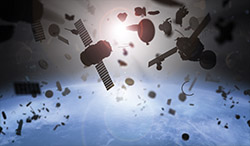
Currently, there are 21,000 catalogued objects — such as satellites that provide GPS signals, weather information, and images — and about 100,000 pieces of man-made debris orbiting the Earth. Space, it turns out, is more congested than ever.
And that’s a problem. “All of these objects could potentially collide,” says Carolin Frueh, assistant professor of aeronautics and astronautics. “They aren’t nicely aligned like trains. They come at each other from different directions at incredible velocity.”
Monitoring space traffic is complex, Frueh says. No single agency or nation can be in charge of reliably characterizing and continuously tracking everything. The International Astronautical Federation publishes guidelines on the handling of space objects, but they aren’t enforced by a particular entity. “It’s up to the owner-operator of satellites to follow the guidelines,” Frueh says.
Using the Purdue Optical Ground Station telescope in New Mexico to detect, track, and characterize near-Earth space objects, Frueh’s research group is working to expand the knowledge needed for effective space traffic management. “One of our questions is observability —what types of measurements give us the most knowledge? We’re also working to understand how objects are affected by natural forces, gravity, solar radiation, pressure, and drag,” she says.
Improving our understanding of what’s out there affects everything from having clear orbital paths for deep-space missions to the reliability of GPS signals, Frueh says. “Leaving space traffic to itself will only cause more collisions that create more debris to clog up space.”
Finding the Gateway to the Solar System
Right now, NASA is laser focused on what is known as the Lunar Orbital Platform Gateway, a way station between Earth and the moon. It will likely prove essential for future human and robotic missions. “This gateway will be a hub of future space activities, enabling us and our international partners to reach the surface of the moon. It may also be a takeoff point for Mars,” says Kathleen Howell, the Hsu Lo Distinguished Professor of Aeronautics and Astronautics.
Howell analyzes how multiple gravitational fields affect a spacecraft’s motion as well as how to leverage those fields for space missions. “Getting out of Earth’s gravity is expensive and not a trivial problem,” she says.
She is working with NASA to develop orbital paths for the lunar gateway. Her expertise is in “near-rectilinear halo orbits” (NRHOs). That’s a mouthful, but it’s part of a family of orbits that are about 45,000 miles beyond the far side of the moon. NRHOs exhibit nearly stable behavior near the moon, making them attractive as a potential site for gateway architecture — and a key to future exploration.
Things That Go Boom!
Danny Milisavljevic, assistant professor of physics and astronomy
Supernovas aren’t just some of the universe’s brightest explosive stars; they may hold keys to life itself. “The oxygen we breathe, the calcium in our bones, the elements that make our lives possible were formed in massive star explosions,” explains Milisavljevic.
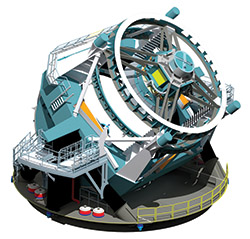
Purdue is a member of the planned Large Synoptic Survey Telescope (LSST) project, which will map the same portion of sky every few nights for 10 years. The data on supernovas that Milisavljevic and other scientists collect and analyze will further human understanding of these violent phenomena.
“We wouldn’t exist if they didn’t happen,” says Milisavljevic. “So how can we thrive as humans without being curious about them?”
How Do You Remove Satellites at the End of Their Lifespan?
David Spencer, associate professor of aeronautics and astronautics
“We’re developing a technology called a ‘drag sail’ for spacecraft in low-Earth orbit — below 1,200 kilometers altitude. A deployed drag sail acts like a parachute, slowing down the satellite and resulting in its eventual deorbit. Our goal is to develop a scalable product line of bolt-on drag sail systems that can be used to de-orbit satellites ranging from very small CubeSats to larger satellites that will be arrayed in orbiting constellations to provide global internet service.”
Extra Credit
We asked our faculty about their essential reading lists to stay informed and up to date about space exploration. Here’s what they recommend.
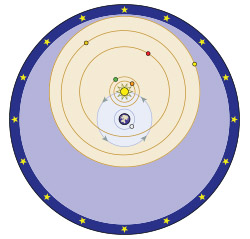
solarsystem.nasa.gov/basics
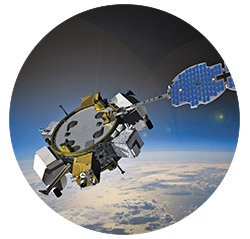
space.skyrocket.de
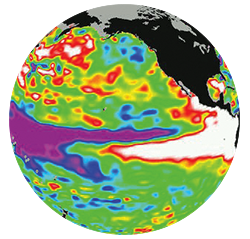
engineering.purdue.edu/SFPL
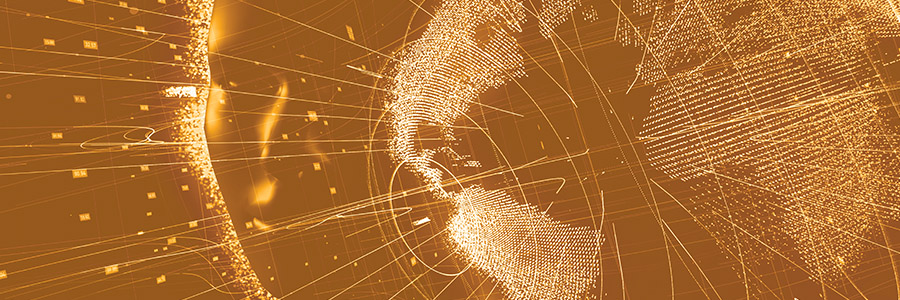
Giant Leaps in: Artificial Intelligence, Algorithms, and Automation
There’s no doubt we’re entering a new technological age. Our day-to-day lives are being reshaped by an avalanche of data. Data-driven innovations affect critical global issues like poverty, human health, warfare, and the environment.
With its integrative data science initiative, Purdue is at the forefront of advancing interdisciplinary, data-enabled research. It is educating leaders prepared to design the future of society.
Becoming the Jetsons
The Internet of Things — the network of items such as smart locks, thermostats, and monitors that connect and exchange data — is revolutionizing our lives.

“The technologies that thrive are those that create conveniences for people,” says Mohammad Rahman, associate professor of management. “Personal digital assistants are becoming more omnipresent and powerful.”
Our refrigerators will soon be able to detect when we’re low on milk, order and pay for it, and have it delivered and put away. “Walmart is testing a system that allows access to our homes for this very purpose,” says Rahman, who researches digital transformations in the retail and financial industries, including how digital traces inform future human behavior.
Harnessing the data generated by connected things also will transform business. “Innovations in artificial intelligence are leading to streamlined operations, lower costs, and better customer experiences,” Rahman says.
Is your computer funnier than you are?
Not quite yet.
Developing computational devices that are intelligent enough to detect human wit and fire back wisecracks is serious research. It starts with getting computers to identify humorous content by recognizing simple jokes — Did you hear about the claustrophobic astronaut? He just needed a little space — interspersed with straight text.
“The goal is for a computer to insert humorous lines into a conversation while fully recognizing the lines are funny,” says Julia Rayz, associate professor at Purdue Polytechnic Institute.
The challenge is that humor depends on such things as self-awareness, spontaneity, linguistic sophistication, and empathy. “There’s a lot of nuance to humor, and what seems funny now might not be funny tomorrow,” Rayz says. “It’s common for us to joke with each other, and eventually, we’ll want to joke with our devices, so that communication needs to be as natural as possible.”
Big Data Won’t Solve Everything. Here’s What’s Missing.
Karthik Kannan, Thomas Howatt Chaired Professor in Management
Big data has opened up entirely new avenues to innovation — but those who consider it a cure-all are missing out.
“Relying on just big data can lead to bad design,” says Kannan. “Considering human behavior is a key element in innovation.”
“For example, cars in 30 years will likely be autonomous, but why do you need a whole car when a $200 electric scooter will do? The problem with old systems is that they force humans to adapt. Our systems need to evolve to provide innovative solutions designed to meet our real needs instead of trying to force existing solutions to fit.”
Catch A Predator
Kathryn Seigfried-Spellar, assistant professor of computer and information technology, is modernizing digital forensics to help law enforcement agencies prioritize their response to internet crimes against children, such as child pornography or sexual solicitation.
The Chat Analysis Triage Tool, supervised with Julia Rayz, associate professor, and Marcus Rogers, professor and department head, and developed by students Kanishka Misra, Tatiana Ringenberg, Shih-Feng Yang, and Socrates Wong at Purdue Polytechnic Institute, takes just seconds to analyze large amounts of online content, using algorithms to recognize letters, words, and language patterns. One such pattern is self-disclosure, in which offenders discuss negative experiences like being abused or having divorced parents to build trust with their targeted victims.
“The tool helps police officers quickly identify if someone is about to escalate from talking online to initiating physical contact,” Seigfried-Spellar says. “The police can then investigate and potentially prevent a sex offense from occurring.”
We Can Do It. But Should We?
Patrick Wolfe, Frederick L. Hovde Dean of Science and Miller Family Professor of Statistics and Computer Science
“Imagine a world where a judge or a doctor gets replaced by an algorithm. The effects of that would be wide-ranging, so we need to bridge the gap between technologists and policy makers to encourage better regulatory environments and legal frameworks. We want to be thinking deeply about the social, legal, economic, and ethical consequences of artificial intelligence.”
Essential Reading
Want to learn more? Purdue faculty came up with a killer reading list.
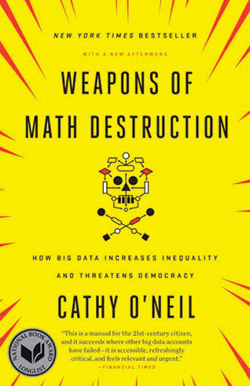
Weapons of Math Destruction: How Big Data Increases Inequality and Threatens Democracy by Cathy O’Neil
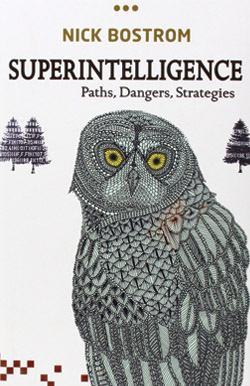
Superintelligence: Paths, Dangers, Strategies by Nick Bostrom
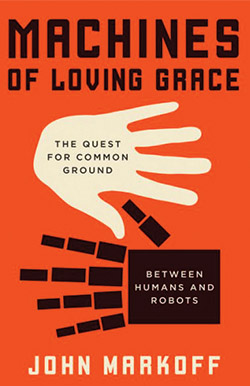
Machines of Loving Grace: The Quest for Common Ground between Humans and Robots by John Markoff
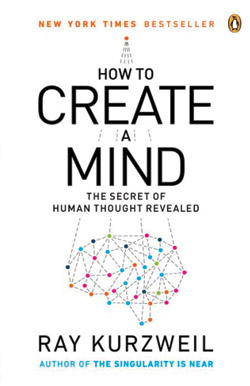
How to Create a Mind: The Secret of Human Thought Revealed by Ray Kurzweil
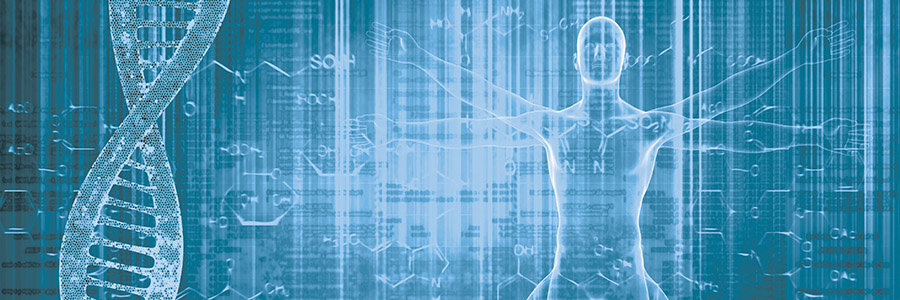
Giant Leaps in: Health Longevity, and Quality of Life
Advances in the biomedical sciences are improving our ability to understand, prevent, and treat diseases that threaten our long-term health. With world-class centers for cancer research, aging, and women’s health, as well as programs in nutrition, nursing, pharmacy, and health sciences, Purdue is focused on mitigating the health issues that affect longevity. It is expanding our understanding of — as well as removing — the barriers to good health.
Why Man’s Best Friend May Help Fight Cancer
“Studying naturally occurring cancers in pet dogs can help us learn to better manage cancer in people,” says Michael Childress, associate professor of veterinary clinical sciences.

“Cancers in dogs and people are both heterogeneous, which means that the same treatment has different results in different individuals. Some are cured, some have their lives extended, some die. Induced cancers in mice by contrast, are more homogeneous and tend to respond to therapy in a homogeneous fashion, making mice less useful for study. Dogs also are a better model than mice for manipulating the immune system to treat cancer.”
Thanks, Mom, For Everything.
“Your mother’s diet, lifestyle, weight gain, and physical activity in pregnancy influence the molecular underpinnings of your health,” says Distinguished Professor and Head of Nutrition Science Michele Forman. Forman, a nutritional epidemiologist, studies human health across the life course, particularly fetal origins of disease.
“Nutrition influences fetal growth dramatically and is the essential core to a healthy life,” she says.
Not following dietary and physical activity guidelines as well as weight gain recommendations during pregnancy, Forman says, means that you need to improve your diet and increase your physical activity to minimize your health risks.
Ferreting Out Harmful Chemicals
When is exposure to certain chemicals safe — and when does it become harmful?
Those are questions that Jennifer Freeman, associate professor of health sciences, investigates in her research. Freeman studies chemical contaminants in the environment — the herbicide atrazine, for example, which is commonly used in cornfields and frequently contaminates water supplies — and draws connections to resulting adverse health outcomes in humans.
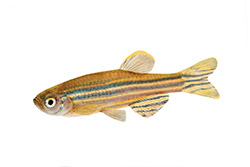
Freeman’s lab tests its hypotheses on zebrafish, an organism that shares many similarities with the human genome and allows for useful comparisons. For example, her research team has found that atrazine exposure in developing zebrafish is associated with disruption of neuroendocrine and reproductive system function, cell cycle, and carcinogenesis.
Beyond informing regulations on safe dosages of exposure to environmental contaminants, the research “furthers our understanding of how exposure to contaminants in utero, early development, and childhood might influence the onset of later diseases,” Freeman says.
Improving Diabetes Care
Researchers at Purdue and Indiana University School of Medicine have developed the first minimally invasive therapy in mice that shows promise for long-term reversal of Type 1 diabetes in both dogs and humans. The therapy could potentially replace daily insulin injections with a shot every few months.
Researchers injected mice with healthy pancreatic cells embedded in collagen — a protein our bodies make for building muscles, bones, skin, and blood vessels — to eliminate a potential inflammatory response to the injection.
The cells returned blood-glucose control within 24 hours and extended it for 60 to 90 days.
“We’re conducting ongoing studies to better understand the level of immune protection that’s afforded to the cells when they’re encapsulated in the collagen,” says Sherry Harbin, professor of basic medical sciences. The next step is a pilot clinical study in dogs.
The not-so-sweet truth
Susan Swithers, professor of psychological sciences

“We must reframe messages about artificial sweeteners to be about health. The food industry focuses on weight because it’s easy for them to make that an issue of personal responsibility and not public policy. People should have choices about what they eat, and body weight alone shouldn’t matter. Sweeteners can increase our risk for diabetes, heart disease, dementia, and stroke. What we need are choices that improve the quality of our life, not endanger it.”
Eight Steps to Reduce Cancer Risk
Cancer is the second-leading cause of death in America. Here’s what you can do to help avoid it.
- Maintain a healthy body weight
- Limit consumption of processed foods high in fat, starches, and sugars
- Be physically active
- Limit consumption of red and processed meat
- Limit consumption of sugar-sweetened drinks
- Eat a diet rich in whole grains, vegetables, fruits, and beans
- Limit alcohol consumption
- Do not use supplements for cancer prevention

Giant Leaps in: A Sustainable Economy and Planet
Urgent and unprecedented environmental and social changes, such as economic development and population growth, have created a rising demand for food, water, and energy. These changes also present opportunities for sustainable solutions that respect both human needs and global ecosystems. With world-class research centers for the environment, energy, climate change, and food security, Purdue is a leader in developing holistic approaches to addressing humanity’s most pressing environmental and sustainability challenges.
Sustainable Allies
Peru’s Arequipa region is incredibly diverse in its geology, climate, ecology, land use, and cultures — and it has an array of natural resources, including ore deposits, fisheries, and glaciers, says Timothy Filley, professor of geochemistry and soil science and acting director of Purdue’s Center for the Environment. “In a little more than 100 miles, you can go from sea level to 20,000 feet. You can go from coastal desert to alpine meadows to lakes nestled under glaciers,” he explained in a recent radio interview. The region’s economy is largely driven by its mining resources.
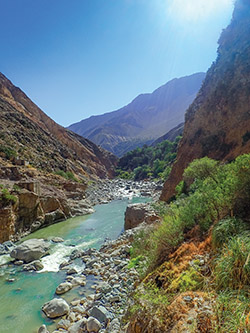
Arequipa also faces significant challenges: a changing climate, diminishing natural resources, a legacy of environmental degradation, and diverse communities seeking prosperity and security. To address these challenges — familiar to many developing economies — Purdue is partnering with the Universidad Nacional de San Agustin (UNSA) in a cooperative technical alliance program.
The program’s first research initiative is the Arequipa Nexus Institute for Food, Water, Energy, and the Environment, which seeks to provide the tools and perspectives needed to foster sustainable economies within Peru, throughout Latin America, and worldwide. The institute’s initial projects vary from developing sustainable water management to mapping soil impairments and improving soil health to creating robotic systems that monitor water quality and distribution to designing net-zero energy buildings.
Filley, who codirects the Nexus Institute’s scientific programs, says the UNSA alliance takes advantage of the best Purdue has to offer. “We’ve pulled together our expertise in the social sciences, environmental sciences, holistic watershed management, soil sustainability and health, and technology development to create an institute-level program in collaboration with UNSA that will work to solve these grand challenges,” he says.
Do No Harm
Jonathon Day, associate professor of hospitality and tourism management
“Sustainable tourism embraces the idea that every traveler can be responsible — reduce the negatives and enhance the positives — of visiting a particular area, be it rural, urban, or natural. It seeks to improve the social and cultural, environmental, and economic effects of tourism, or what we call the triple bottom line.”
Drink Up
Luciano Castillo, Kenninger Professor of Renewable Energy and Power Systems in Mechanical Engineering
An argument in favor of renewable energy technologies such as solar panels and wind turbines is that they save vast quantities of fresh water. It’s a precious commodity in a world with nearly a billion people who lack access to clean water. Almost 90 percent of electricity in the US comes from thermoelectric power plants, which account for 45 percent of water use. Of that, 33 percent comes from freshwater sources (e.g., lakes, rivers, and underground aquifers).
Additionally, the water needed by renewable sources to produce one megawatt-hour of electricity is orders of magnitude lower than that of nuclear, coal, and natural gas plants. A shift toward renewables would make freshwater available for food production and human consumption, as well as reduce greenhouse gas emissions.
From West Lafayette to the World
Purdue researchers are partnering in projects making a difference around the globe:
- Helping improve processing and marketing of key crops to reduce hunger and poverty in sub-Saharan Africa
- Partnering with Colombian laboratories that take advantage of local biodiversity to develop nanotechnology and bioproducts that impact human health
- Leading one of six US-China EcoPartnerships to address the combined effects of climate change, renewable energy, and human activities on regional and global ecosystems.
Developing Resilience
Laura Zanotti, associate professor of anthropology
“Social scientists work with communities to identify the economic, ecological, and social and cultural factors that contribute to their well-being. The idea is that if a community has a strong collective identity and local knowledge systems about customary resource management practices that are responsive to dynamism and change, then it will be better able to respond to unpredictability over time. That makes it more sustainable.”

